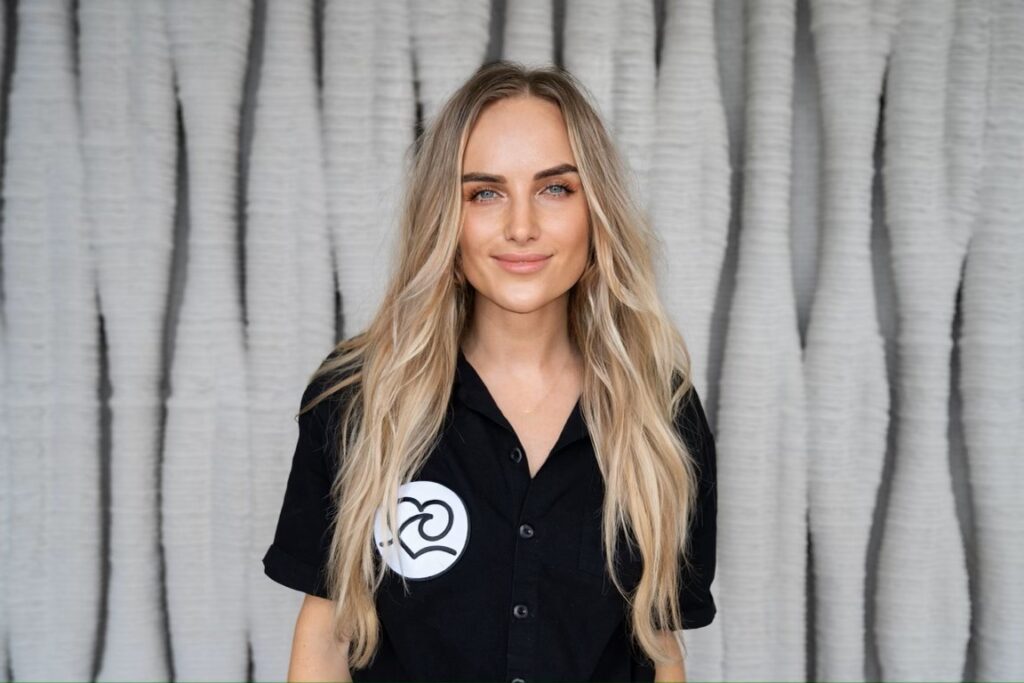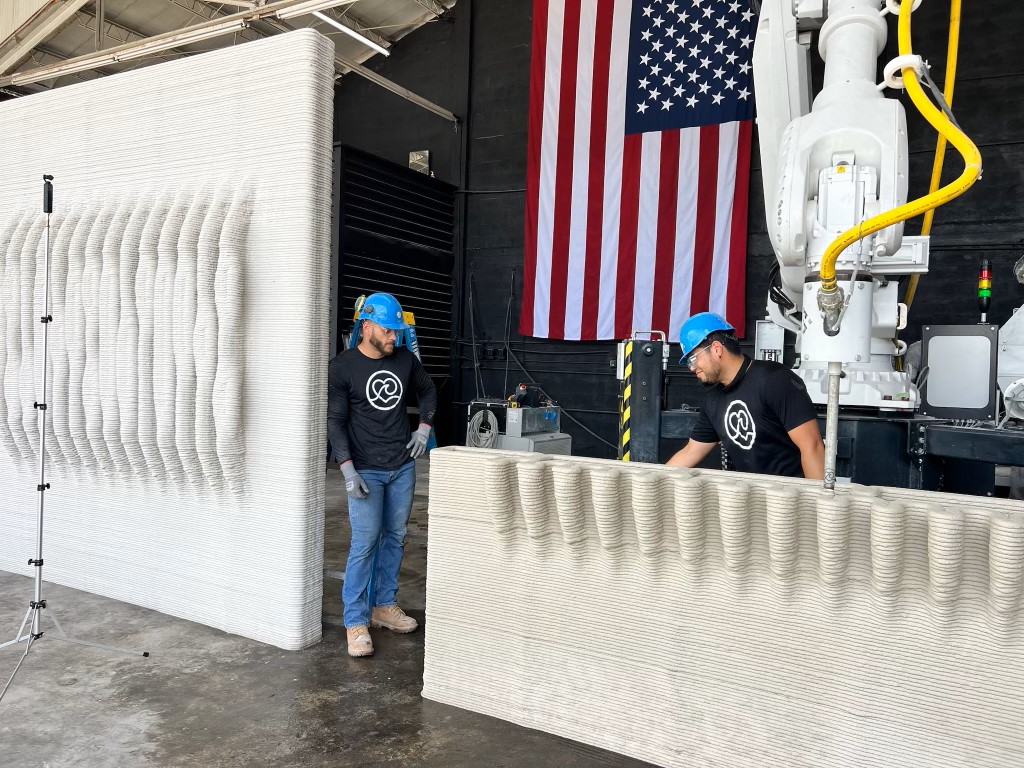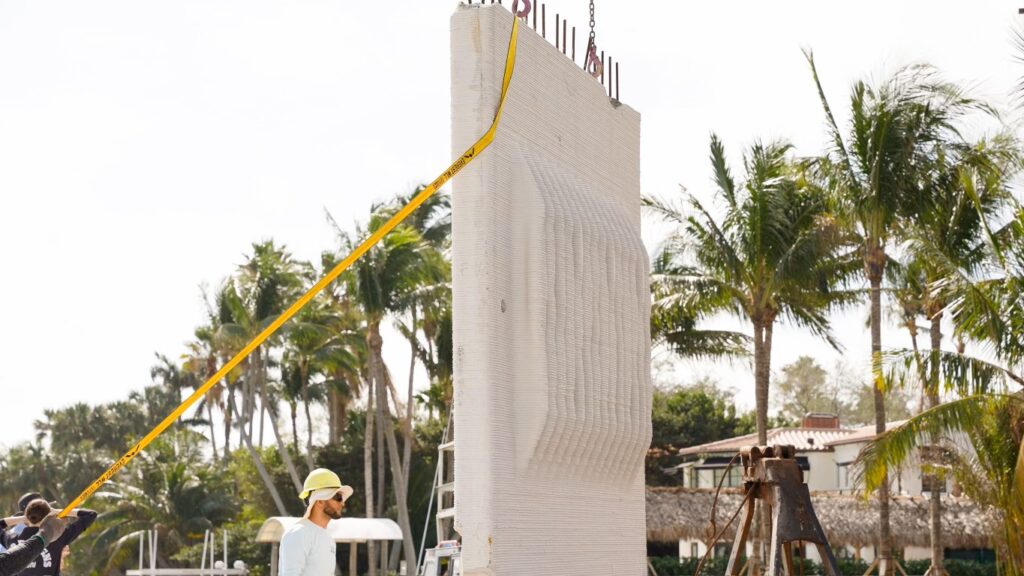By Bella Kubach, The Invading Sea
The following is a Q&A conducted with Anya Freeman, founder and CEO of Kind Designs. Kind Designs is a Miami-based climate technology company that creates 3D-printed living seawalls with environmental benefits over traditional concrete seawalls. These living seawalls provide habitat to marine organisms, collect water quality data and sequester carbon. This interview has been edited for length and clarity.
Could you tell us about your mission at Kind Designs?
At Kind Designs, we are protecting coastal cities from rising sea levels by replacing toxic seawalls with living seawalls. Living seawalls function like reefs; they sequester carbon and they collect essential water quality data. …We collect 15 different parameters. These are the same parameters that counties already have budgets for to collect manually.
Right now, they send people out on a kayak, and they get a beaker sample, but by the time they go home, test the sample and input the results, the conditions usually have changed. Instead, you can just log onto our dashboard and see the parameters live, and all our seawalls communicate; it’s not just single points of data. …
From my understanding, you were previously a prosecutor. Can you tell us what sparked your interest in seawall design?

Me being a lawyer was my parents’ American dream. I’m an immigrant from Ukraine. I went to law school to fulfill my parents’ dreams. My brother went to medical school, and then both of us ended up totally changing careers and becoming entrepreneurs. But for me, it happened just because I was living in Miami. I was living in South Beach. I originally came here to go to law school. I got a scholarship to study at the University of Miami Law.
I graduated, and I was working and living in South Beach in a house with my girlfriends. We lived there for seven years and just started noticing how bad the flooding was getting. It used to be like once a year, then it became like once every six months. It was almost monthly when we had really serious storm surges and more frequent flooding events. So, I just became very curious about this phenomena. What I saw in the community was that many people were paying attention to this problem, but there was very little conversation around solutions.
I started researching the space, and that’s when I first learned that seawalls have always been the first line of defense for coastal cities to protect themselves from flooding. But seawalls have never been innovated. Literally the first seawall, the one in that went in the water 100 years ago in Galveston, Texas, is exactly the same product that we’re still putting in the water today.
The problem with these seawalls is that they’re very expensive for communities, and they destroy marine habitats. So, I started to think: How can we come up with a solution that protects our cities and our coastal cities from flooding but also something that’s more affordable for communities, more beautiful and something that’s nurturing for the underwater ecosystem?
How long did it take for you to come up with the design? Who else did you work with to create it?
This whole idea is a convergence of a few existing technologies. It’s 3D printing, material science, sensor tech and artificial reef science, which is well established.
We were the first ones to apply that existing artificial reef science to a structural product like a seawall, but we didn’t have to invent it from scratch. Artificial reef science says that you need at least three-inch caves for sea life to have a space to hide from predators. We just incorporated that into the design of the seawall. That’s why the design happened, and the company was able to grow as quickly as it did because we were converging existing technologies and sciences.
We launched in July of 2023, and seven months later, we’re already a fully operational team of 10, and we have already started installing our living seawalls in Miami and Miami Beach.
How is this new seawall design combating rising sea levels?

There’s adaptation technology, and there’s mitigation technology. Mitigation is sequestering carbon that will actually reduce the rate of rising sea levels. Adaptation is technology that adapts to existing conditions to protect cities and buy time.
At Kind Designs, we are an adaptation climate technology company. We’re adapting cities to existing rates of flooding, storm surges and rising sea levels. We do that through infrastructure. Again, we’re building that first line of defense.
There are a few components to what cities do to protect themselves from rising sea levels. The biggest one, the most important one, is building these seawalls. We’re transforming the existing seawalls into something that’s great for the environment because traditional seawalls actually destroy marine habitats. Ours, on the other side, function as reefs and we’re collecting data. …
How long does it take for the 3D printer to print the seawalls?
We have the world’s fastest concrete 3D printer. It’s crazy fast. We print a 10-by-10 panel in one hour.
How do you wish to expand Kind Designs in the future?
We will be in every single coastal city in the world. Rising sea levels is not a Miami problem; it’s not a U.S. problem. Globally, there’s 507 cities at risk. We’re starting in Florida; it’s my home, and we have amazing support from the government and the media here and amazing investors who are very connected in the construction world.
We are mass producing these panels in Florida, and then we’re scaling to all the other cities through a franchise model so they can use our technology, our materials and our library of designs, and then they can execute the seawalls themselves.
What kind of economic effects do you see that creating a company like this has?

I think economics are super important in climate technology because a lot of amazing ideas die because they don’t find an economic vehicle for them. There has to be great economics; you really can’t force these environmental products onto communities or people when it’s already cost-prohibitive for them
At Kind Designs, our economic vehicle is a seawall. Seawalls are mandated by the government. With or without me, they’re putting in miles and miles of concrete seawalls in the next few years. I don’t have to convince anyone to buy a seawall. And all of the environmental benefits of our seawalls have no green premium; there’s no added cost. Our living seawalls are the same price as a traditional toxic concrete wall.
I think that’s the key: finding a product, No. 1, that is already mandated, or at least something that people have that you don’t have to convince anyone to get. And No. 2, creating the economics so there is no green premium. That’s how you can really scale the environmental impact.
This Q&A was conducted by Bella Kubach, a Florida Atlantic University senior majoring in multimedia journalism who is reporting for The Invading Sea during the spring 2024 semester.
Sign up for The Invading Sea newsletter by visiting here. If you are interested in submitting an opinion piece to The Invading Sea, email Editor Nathan Crabbe at ncrabbe@fau.edu.




Your wall will mitigate storm surge . It will not effect sea rise. The water will be held back by walls for a time then will seep through the limestone bedrock. The water will only be held back if the wall protects the entire coastline . Walls are only a short term solution. When Greenland and West Antarctica melt the walls will need to be at least thirty feet high.